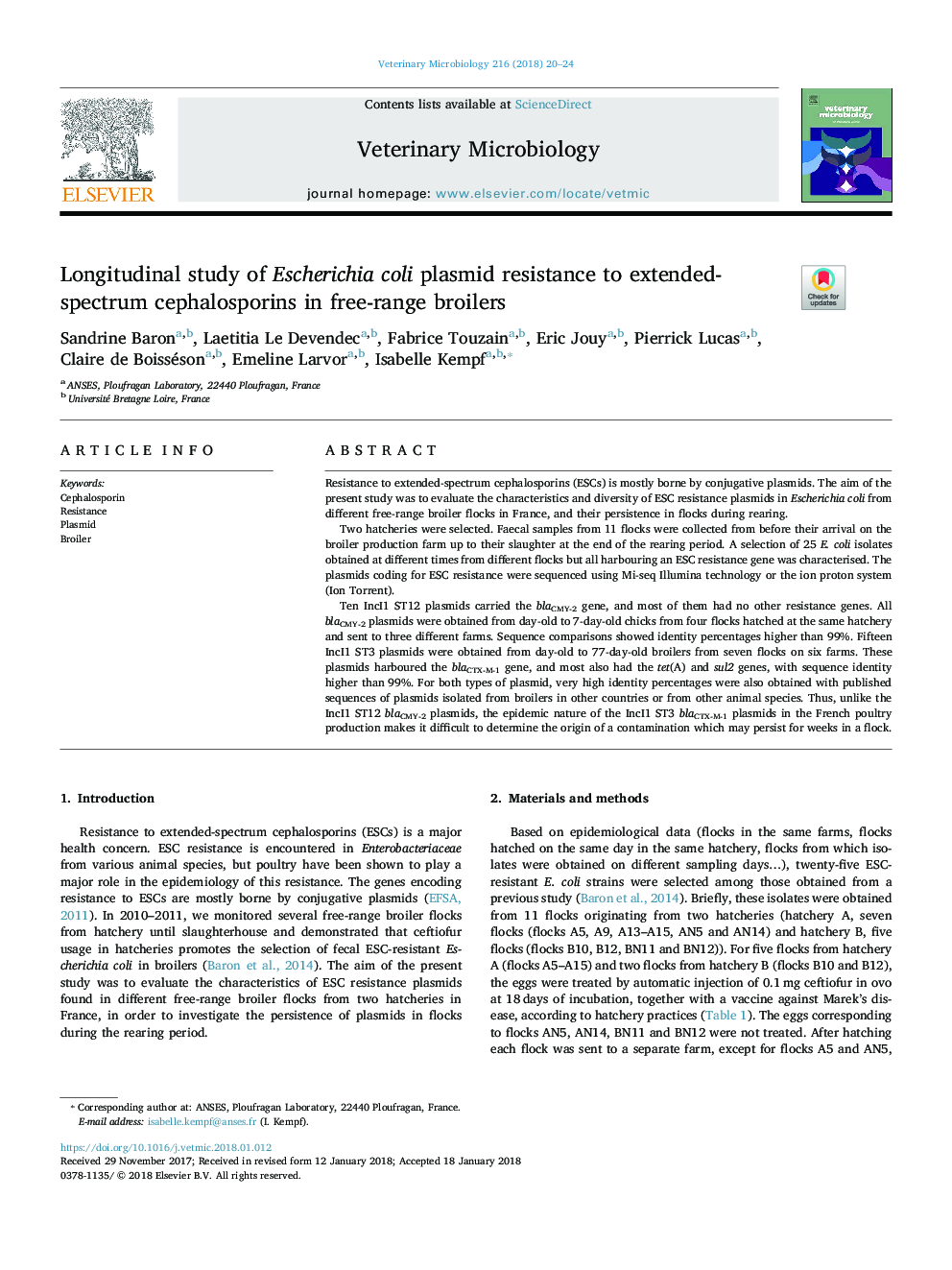| Article ID | Journal | Published Year | Pages | File Type |
|---|---|---|---|---|
| 8505571 | Veterinary Microbiology | 2018 | 5 Pages |
Abstract
Ten IncI1 ST12 plasmids carried the blaCMY-2 gene, and most of them had no other resistance genes. All blaCMY-2 plasmids were obtained from day-old to 7-day-old chicks from four flocks hatched at the same hatchery and sent to three different farms. Sequence comparisons showed identity percentages higher than 99%. Fifteen IncI1 ST3 plasmids were obtained from day-old to 77-day-old broilers from seven flocks on six farms. These plasmids harboured the blaCTX-M-1 gene, and most also had the tet(A) and sul2 genes, with sequence identity higher than 99%. For both types of plasmid, very high identity percentages were also obtained with published sequences of plasmids isolated from broilers in other countries or from other animal species. Thus, unlike the IncI1 ST12 blaCMY-2 plasmids, the epidemic nature of the IncI1 ST3 blaCTX-M-1 plasmids in the French poultry production makes it difficult to determine the origin of a contamination which may persist for weeks in a flock.
Related Topics
Life Sciences
Agricultural and Biological Sciences
Animal Science and Zoology
Authors
Sandrine Baron, Laetitia Le Devendec, Fabrice Touzain, Eric Jouy, Pierrick Lucas, Claire de Boisséson, Emeline Larvor, Isabelle Kempf,
